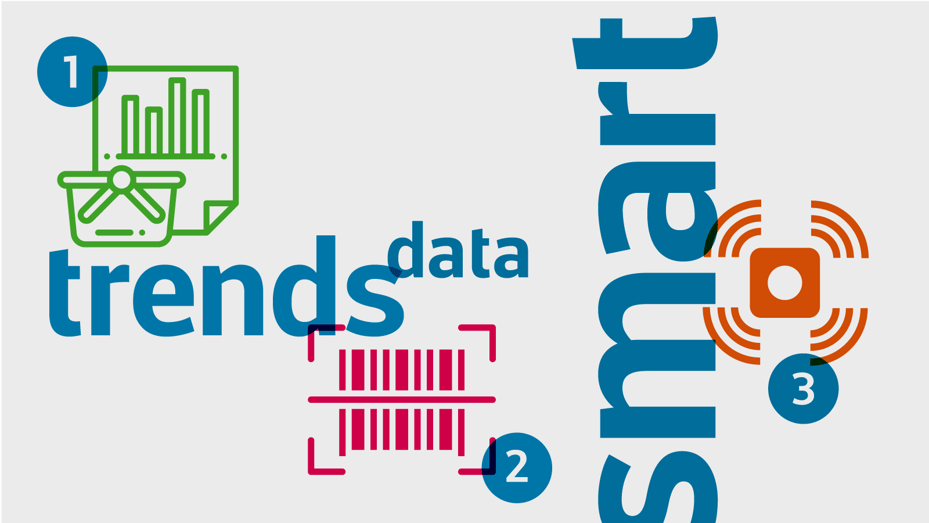
- Home
- PLM & Compliance Blog
- 3 Ways Manufacturers Implement Flexible Data Management to Keep Up with Product Digitalization Trends
3 Ways Manufacturers Implement Flexible Data Management to Keep Up with Product Digitalization Trends
|
Product Lifecycle Management
|
Food & Beverage
Posted By:
Trace One

From scanning item barcodes on their phone to automatically seeing suggested items in online shopping cards, today’s consumers want engaging, personalized digital experiences that offer on-demand product insight from food and beverage brands. In fact, a study from consulting firm RSM found that companies with digitally-transformed operations saw 18% higher gross margins than their competitors.
The Power of Digital
Digital operations may mean a more direct line to consumers, but it also means that manufacturers must figure out how to digitize complex internal operations across the product lifecycle and ensure data from each step is compatible with marketing-oriented systems.
Today, the new digital data ecosystem requires the ability to do things like:
- Power online sales analytics. With the rise of online grocery shopping, manufacturers are grappling with how to capture insights from online customer shopping carts to track trends and create new areas of meal innovation. Manufacturers that can quickly formulate to get new products to the shelf in the same real-time manner as they are pulling sales analytics will be well-positioned to serve online shopping.
- Facilitate smart labeling data. Forward-thinking manufacturers are now enabling customers to scan an item's barcode in the grocery aisle and link to informative dietary websites, pop-up information, or location-based promotions. To facilitate this, formulation data must be formatted to be compatible with mobile consumer-facing applications.
- Implement smart machine sensors. Many manufacturing plants using smart sensors on machines in their plants to process efficiency, monitor product quality and ensure distribution reacts to demand. Although this type of tracking reduces the manual work of quality assurance, manufacturers must have tighter feedback loops in place to automatically share data from plants into formulation design and innovation portfolios.
Manufacturers that can tackle the flexible data management needed to power these kinds of digital customer experiences have a major leg up on reaching the market.
However, many of these data strategies represent a significant leap forward for brands that are used to working off of spreadsheets or static, disconnected operational systems to manage different parts of the supply chain.
How to Update Product Data Management to Power Product Digitalization
As customer data becomes even more deeply ingrained with product data, manufacturers are starting to use their operational systems (PLM, ERP, CRM) less as data stores and more as hubs of strategic intelligence that enable real-time decision making and power dynamic data sharing.
The good news is that PLM contains many of the strategic functions needed to achieve this kind of product and data digitalization. For manufacturers who are starting to tackle product digitalization, we recommend using a PLM system to:
- Create one standard dynamic record of product information
PLM systems have always been a wealth of information, but increasingly, they are being used as the single source of truth for product data. Because PLM systems can be trusted as the standard of history for all product information, it’s a natural connective hub to marketing-oriented systems like PIM, CRM, and ERP. Using PLM to automate the collection, storage, use and dissemination of product data to other systems will become paramount to manufacturers’ abilities to accurately forecast consumer trends and manage real-time portfolio analysis.
- Support flexibility in recipe design and production
To service product digitalization experiences, manufacturers must be able to quickly access and activate multiple variations of the same product and packaging in real-time. Product managers can use their current PLM system to run more in-depth formula comparisons and see the differences in characteristics of two or more products, enabling faster decision making across ingredient and cost possibilities. PLM can also be used to track formulation and packaging versioning and understand how product variations were created, modified and evolved over time and over many different scenarios.
- Tighten connections between product development and manufacturing facilities
The increased connectivity of devices, machines, facilities, and processes means manufacturers must be able to implement changes to formulation and manufacturing processes simultaneously. Manufacturers that can quickly change suppliers based on audience data, funnel those changes into formulation data, and distribute those changes to different manufacturing locations and equipment footprints will be well-poised to respond immediately to current market demands.
To do this, PLM enables manufacturers to directly translate product and ingredient specifications and packaging design into operational requirements on the plant floor using supplier and co-man portals. By linking personal safety, equipment set up, input and output attributes, and recipe quality validation to formulation updates, manufacturers can better track if manufacturing processes are changing at the same pace to meet both consumer demands and new financial targets.
Product digitalization and digital customer experiences are requiring manufacturers to have an even more complex and interconnected data strategy. However, manufacturers can solve many of these challenges by establishing one master source of product data in their PLM systems and flowing that data into other supply chain and marketing-oriented systems.